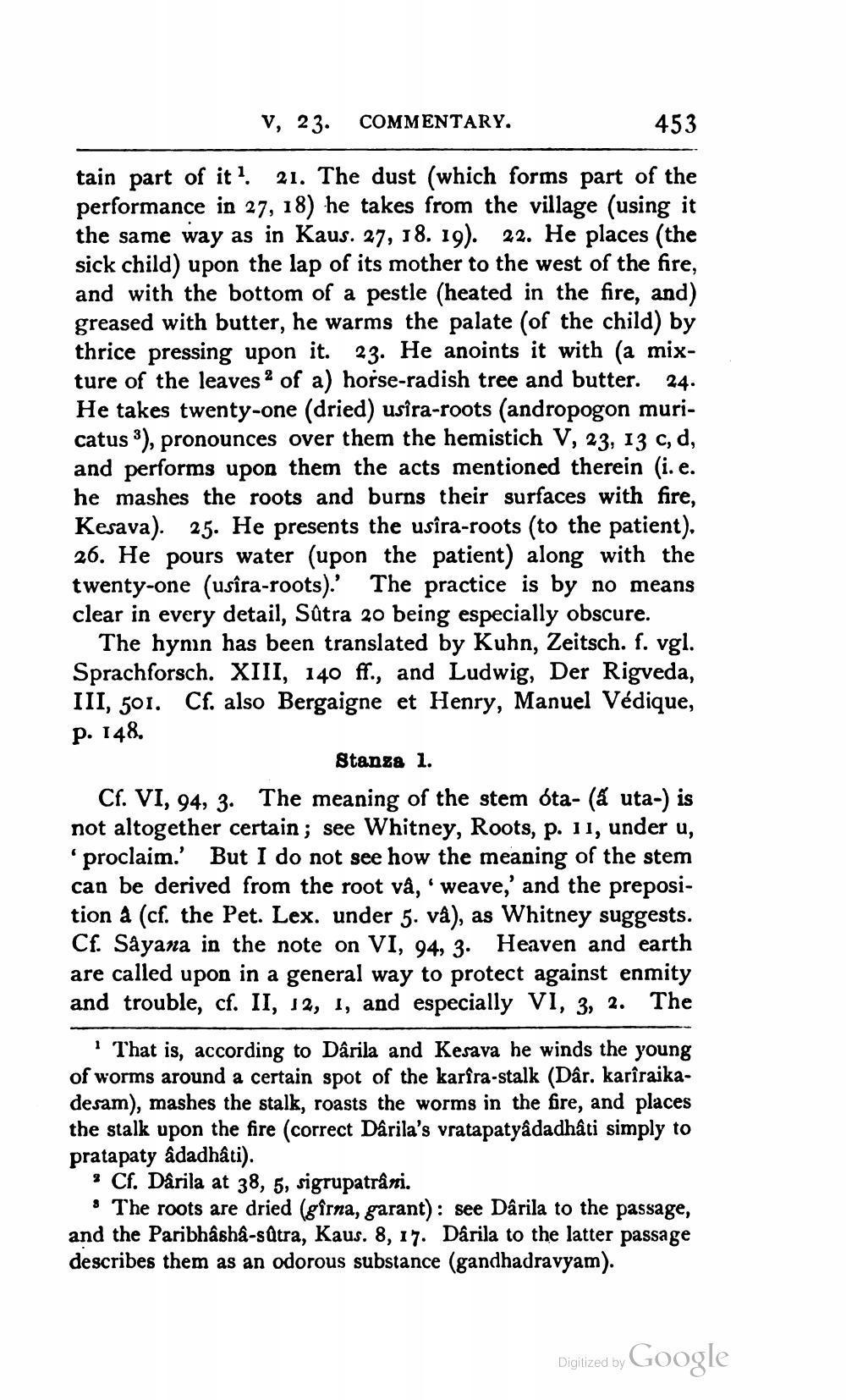________________
V, 23. COMMENTARY.
453
tain part of it? 21. The dust (which forms part of the performance in 27, 18) he takes from the village (using it the same way as in Kaus. 27, 18. 19). 22. He places (the sick child) upon the lap of its mother to the west of the fire, and with the bottom of a pestle (heated in the fire, and) greased with butter, he warms the palate (of the child) by thrice pressing upon it. 23. He anoints it with (a mixture of the leaves of a) horse-radish tree and butter. 24. He takes twenty-one (dried) usîra-roots (andropogon muricatus 3), pronounces over them the hemistich V, 23, 13 c, d, and performs upon them the acts mentioned therein (i.e. he mashes the roots and burns their surfaces with fire, Kesava). 25. He presents the usîra-roots (to the patient), 26. He pours water (upon the patient) along with the twenty-one (usîra-roots).' The practice is by no means clear in every detail, Sûtra 20 being especially obscure.
The hymn has been translated by Kuhn, Zeitsch. f. vgl. Sprachforsch. XIII, 140 ff., and Ludwig, Der Rigveda, III, 501. Cf. also Bergaigne et Henry, Manuel Védique, p. 148.
Stanza 1. Cf. VI, 94, 3. The meaning of the stem óta- (a uta-) is not altogether certain ; see Whitney, Roots, p. 11, under u,
proclaim.' But I do not see how the meaning of the stem can be derived from the root vå, weave,' and the preposition a (cf. the Pet. Lex. under 5. và), as Whitney suggests. Cf. Såyana in the note on VI, 94, 3. Heaven and earth are called upon in a general way to protect against enmity and trouble, cf. II, 12, 1, and especially VI, 3, 2. The
That is, according to Dârila and Kesava he winds the young of worms around a certain spot of the karîra-stalk (Dâr. karîraikadesam), mashes the stalk, roasts the worms in the fire, and places the stalk upon the fire (correct Dârila's vratapatyadadhâti simply to pratapaty adadhâti).
* Cf. Darila at 38, 5, sigrupatrâni.
* The roots are dried (gîrna, garant): see Darila to the passage, and the Paribhâsha-sūtra, Kaus. 8, 17. Darila to the latter passage describes them as an odorous substance (gandhadravyam).
Digized by Google




